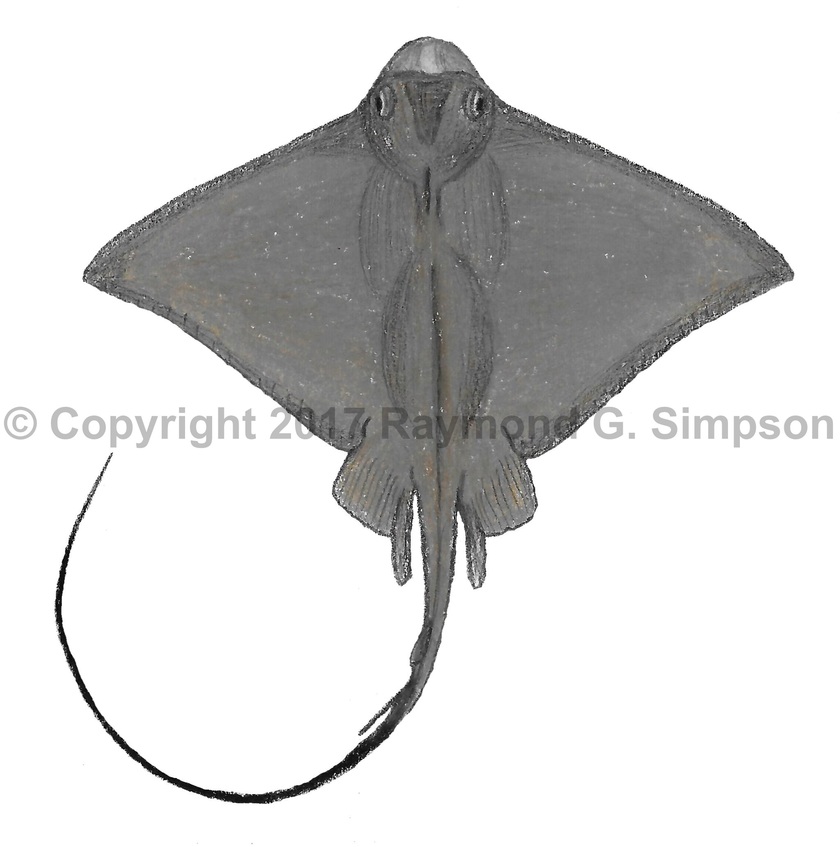
Common Name
Shortnosed Eagle Ray
Year Described
Ruocco, Lucifora, Díaz de Astarloa, Mabragaña & Delpiani, 2012
Identification
Disk broad and rhomboidal. Width of disk longer than length of body. Trunk thickened, especially dorsally. Head projects noticeably. Snout short, fleshy, conical and projecting (about equal to mouth width). Mouth subterminal and relatively wide. Nasal curtain without V-shaped notch. Teeth in 7 rows of plates with central plates being the widest. Plates robust. Spiracles prominent on side of head. Pectoral fin joins head under level of eye and connects to rostral lobe. Anterior disk margin straight. Posterior disk margin concave. Tips of pectoral fin bluntly rounded. Pelvic fins project beyond rear disk. Tail long with 1-2 spines at base near dorsal fin. Dorsal fin small and inserted well posterior to end of pelvic fins. Skin smooth without denticles.
Color
Dorsum gray, brown, or gray-brown. No markings or spots. Ventrum white with gray near the pectoral tips, pelvic tips and posterior margin. Tail black.
Size
Maximum size to over 70cm in width but usually <60cm in width.
Habitat
Found near or on bottom in coastal waters. Enters estuaries.
Range
S. Brazil to Argentina.
References
Last, P.R., White, W.T., Carvalho, M.R. de, Séret, B., Stehmann, M.F.W & Naylor, G.J.P (Eds.). 2016. Rays of the World. CSIRO Publishing, Melbourne. 790p.
Ruocco, N.L., Lucifora, L.O., de Astarloa, J.D., Mabragaña, E., & S.M. Delpiani. 2012. Morphology and DNA barcoding reveal a new species of eagle ray from the southwestern Atlantic: Myliobatis ridens sp. nov.(Chondrichthyes: Myliobatiformes: Myliobatidae). Zoological Studies, 51(6), 862-873.
Other Notes
Closely related to Myliobatis goodei but differs in having a shorter snout, more robust tooth plates, and a wider mouth. It is also well divergent genetically from it’s two relatives (Ruocco et al., 2012).